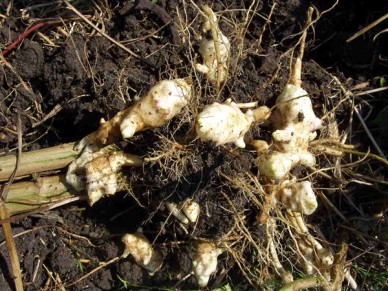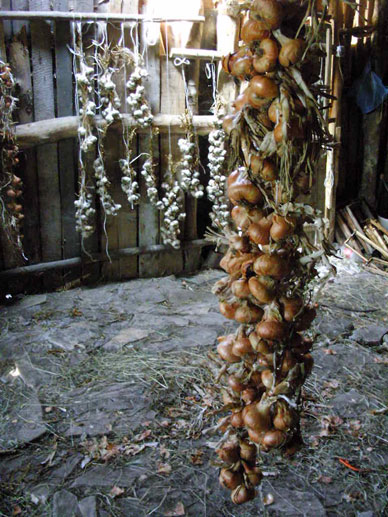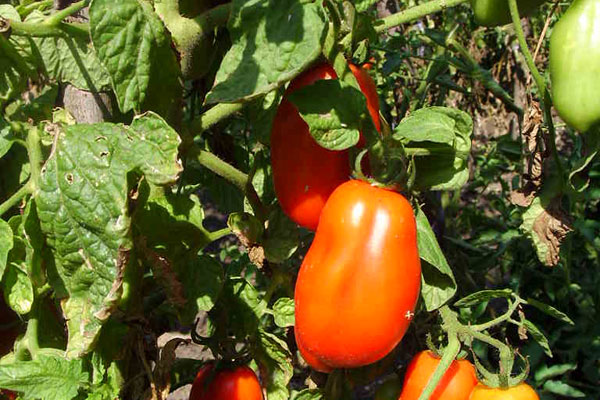Growers' Yearbook: September

Now the nights are getting longer and the days shorter, hopefully your garden is overflowing with produce. September is the time to start getting in all the main crops and getting yourself ready for winter. It’s a good idea to sow green manure after you harvest an area to keep the number of weeds down. When it’s time to plant in spring you can dig the green manure back into the soil. If you have apples ready you can make cider.
What to do in the garden
Celeriac should have any side leaves removed.
Celery needs to be earthed up to blanch the stems.
Prepare the ground for planting apples, loganberries and pears.
Cut down fruited blackberry canes to the ground.
What to plant
Cauliflowers can be planted under a cloche or in a cold house.
Corn salad also known as lamb’s lettuce is a good winter lettuce substitute as it grows happily in the cold weather. Sow thinly in a shallow trench 9″ (45cm) apart, thin to 6″ (30cm) when large enough to handle.
Red cabbage should be sown in a seed bed 6″ (15cm) between rows then transplanted when they’re big enough to handle, then protected from the most severe weather by a cloche.
Land cress is a hardy annual known in America as winter cress. It tastes a lot like water cress but can stand cold and damp. Sow now in shallow drills, when big enough to handle plant 8″ (20cm) apart.
What to harvest
Globe artichokes are a tasty treat loved by many.
Jerusalem artichoke (mainn image) make an interesting addition to the winter pantry. You can leave them in the ground until you need them or dig and clamp them for ease of use. I mostly let the pigs eat them. The pigs will dig up the whole patch leaving their dung as an added bonus.
Cucumber is best used fresh. It doesn’t store well. Eat your fill of salads now.
French beans are a wonderful cropper, they taste great and can be stored in many different ways. You can freeze them, salt them or wait till the seeds are completely dry and use them as dry beans which are then known as haricot (baked) beans.
Haricot beans are simply varieties of French beans that produce good dry beans. Wait until the beans are really dry then harvest and pod them. If it’s damp where you live you can harvest them a bit earlier and dry them inside.
Sweetcorn is one of the great treats of having your own garden. Pick and cook it just before you want to eat it as the sugars start to deteriorate as soon as you pick them. If you have too many to eat in one batch then you can boil them for 5 minutes cut off the kernels and freeze them.
Runner beans like French beans can be frozen or salted. Some varieties will want to have the strings taken out.
Marrows if left to form a hard skin will keep through winter but they are incredibly dull food. I harvest mine when they’re young and tasty, if I miss a few then they get turned into jam or some other preserve.

Beetroot is a great vegetable, you can pickle, roast, boil, add it to salads and even make a great tasting wine from them. Lift yours when they’re nice and big. They store well if kept in a box of sand in the pantry.
Onions Without these food would be a dull affair, every thing I make in the kitchen contains at least a few onions. When the tops turn yellow bend the stalk over to encourage ripening. After 2 weeks loosen the roots with a fork, after another 2 weeks collect them up (if the weather is wet then do this sooner). Put them in a shed or green house to dry out completely. I leave the stalks on so I can tie them up into long strings of onions. Apparently you can just use the stalks to make a plait but I find it easier to use a bit of string (below).

Parsnip can be harvested when you want them but they are much better if you leave them in the ground to be frosted, If you expect hard frosts lift them and pile them in a heap outside or in a shed if you like.
Peas pick them whilst they’re young and sweet. I freeze most of mine, If you want dry peas then you have to pop them in the freezer overnight before you dry them or you will end up with loads of little beasties crawling out of your dry peas. (freezing kills the eggs that will inevitably be inside some of the peas)
Potatoes are a winter staple and are the main source of storable vitamin C that we can grow. Lift them, leave them to dry out in the sun then keep them in a cool dark place with lots of air. Put all the tiny ones and any that got spiked by the fork to one side to be used first or to be boiled up for the animals.
Cabbage pick them when you feel like it. In places with mild winters you can leave them in the ground, if you get harsh winters then put them in a clamp or make sauerkraut.

Tomatoes are the base of so many well loved dishes. In good years they produce so much fruit you’ll find yourself having to preserve them in chutneys, pickles and relishes or eating loads of fresh salads and soups.

Turnips and swedes should be harvested when you want them. Before it gets too cold dig them up, chop off the tops and pop into a clamp.
Most recent Growing articles
- Five unusual and versatile vegetables to grow this spring 24th January, 2016
- Composting: what is it and why should you be doing it? 02nd November, 2015
- Know your onions: Growing onions, leeks, shallots and garlic 15th June, 2015
- Growers’ yearbook December – edible hedgerows and other ideas 01st December, 2014
- Growers’ yearbook November 04th November, 2014
- Growers’ Yearbook: October 04th October, 2014







Leave a reply